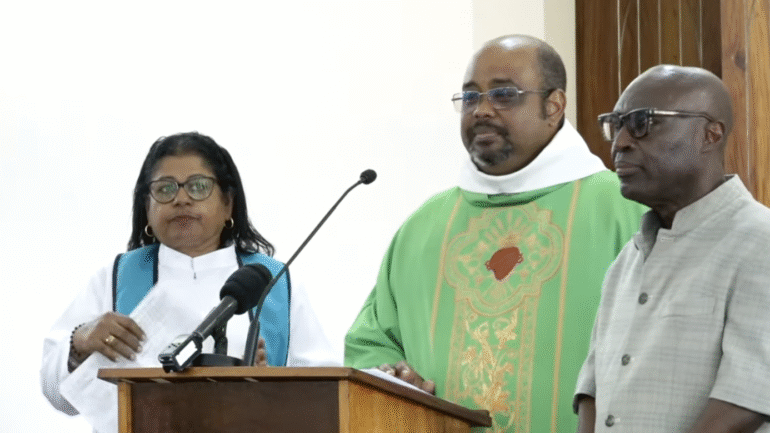
The King of the Asante Kingdom, His Majesty Otumfuo Osei Tutu II, has urged natives of Asanteman and the world to visit the Manhyia Palace Museum to behold and experience the elegance and magnificence of Asante traditional artisanship.
The elegance is evident in the recently returned gold and silver artefacts from the British Museum, Fowler Museum and the Victoria & Albert Museum which are now displayed in the Royal Museum for the public.
An event dubbed, “Homecoming, Adversity and Commemoration” to mark the exhibition of these artefacts looted from the Palace of a King of Asante was held on May 1, 2024, to celebrate their return.
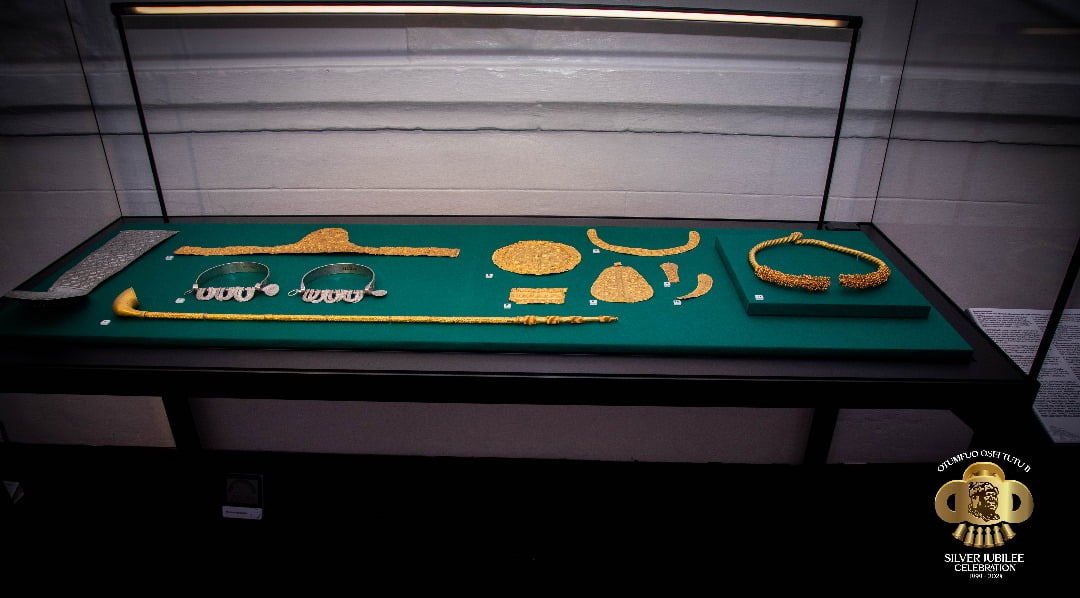
The event was attended by traditional authorities, Scottish Neurologist Prof Malcolm McLeod, Ivor Agyeman-Duah, the Director of Manhyia Palace Museum, Dr Chris Gosden, Trustee of the British Museum, Dr Tristram Hunt, the Director of Victoria & Albert Museum, Mr Edmond Moukala, the Country Representative of United Nations Educational, Scientific and Cultural Organization (UNESCO), and others.
Significance of Exhibition
Speaking at the event, Dr Chris Gosden said their display at the Manhyia Palace Museum will enable the people of Ghana to directly engage with these objects in their history
Recalling efforts in securing the artefacts which date back to the 1970s in the era of Opoku Ware II, he admired the work of Otumfuo in succeeding at it.
“The British Museum is firmly committed to building productive and forward-looking relationships using these collections today. We thank His Majesty for his wisdom and leadership in fostering this strong partnership…The British Museum recognises the importance of these objects to the Asante people and since the 1970s, there have been calls to return them to Ghana.”
The Director of V&A, Dr Tristram Hunt, hailed the artefacts as “exceptional and beautiful” as he posited that it bears witness to the rich heritage and artistic prowess of the Asantes.

Acknowledging the sentiments that surround the artefacts, he said, “The history tainted by the scars of imperial conflict and colonials. We also recognise the enduring cultural, historical and spiritual significance these artefacts hold for the Asante people.
“It is a true honour and indeed a highlight of the V&A’s history to support this homecoming exhibition to see the Asante crown regalia on display in their homeland. These treasures bear witness to the trial and triumph of a great Kingdom and their return to Kumasi is a testament to the power of cultural exchange and reconciliation.”

Challenge
Meanwhile, the Country Representative of the United Nations Educational, Scientific and Cultural Organization (UNESCO), Mr Edmond Moukala indicated that the return is in line with the 1970 Convention which aligns with the Sustainable Development Goal defined by the United Nations 2030 Agenda.
Commending the country for the stride, he challenged it more for more concerted efforts in demanding and advocating for the remaining objects by Asanteman as he stated that they are more than ordinary objects.
“There are more to be identified and returned to Ghana and continue to push for their return. We may also look at and resolve internal challenges around cultural property taken during local wars. I commend Ghana for its efforts and championing the return, reparations and restitution agenda for Africa and the diaspora. These cultural properties are more than objects. They go to the heart of the identity of the community they were taken from.
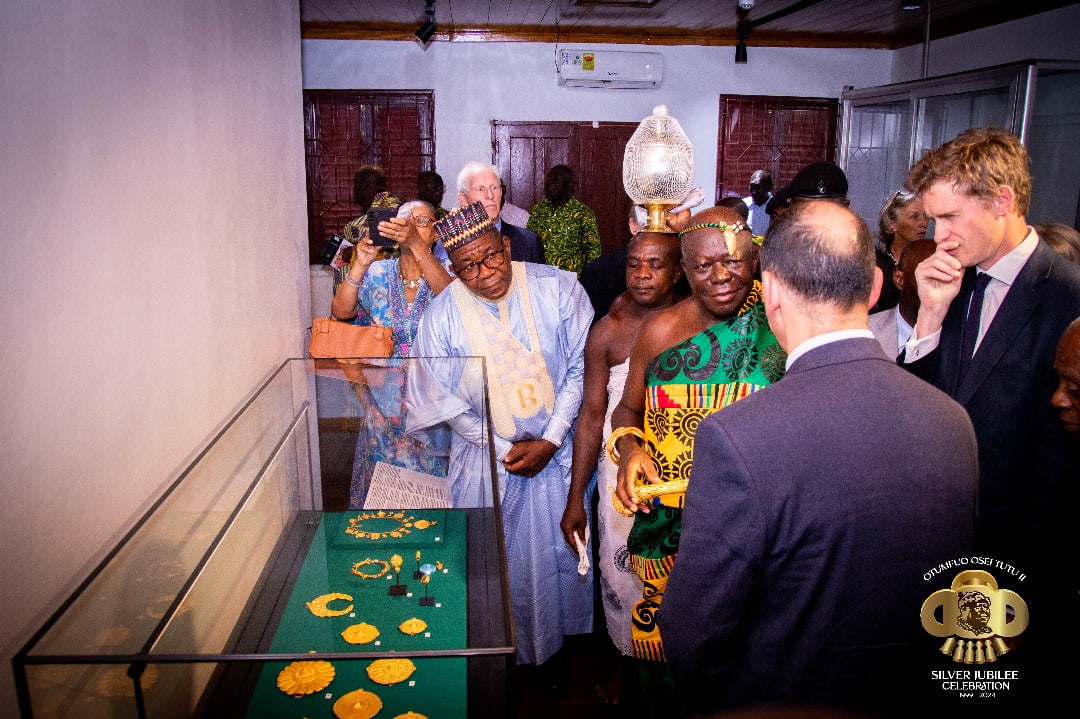
“I hope the return of the current cultural property will encourage the Ghana team with a renewed vigour to come up with a new roadmap involving stakeholders including customs, police, artists, civil society, traditional authorities academia, students, media and the general public and His Majesty. Policy documents such as the culture policy and multi-stakeholder heritage strategy framework of the Ghana Heritage Committee must also provide the necessary backing for the return, reparation and restitution agenda.”
For his part, Prof McLeod, one of the two representatives of the Manhyia Palace in the negotiation process, indicated that restitution must not be the end. He recommended relations and collaborations between Museums for development.
Come Visit
After inspecting the displayed objects, the King addressed the audience from the entrance of what was once the residence of Prempeh I where he urged the world to come and see the artefacts which hold the spirit and soul of Asanteman.
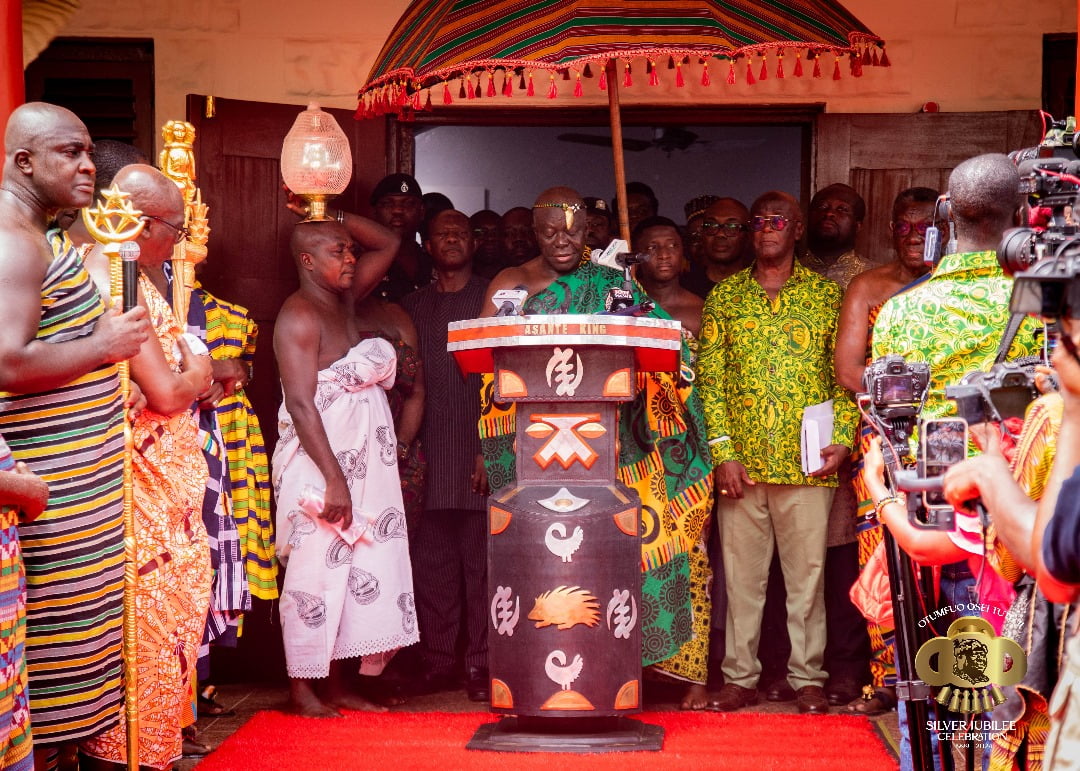
“The items that came back are virtually the soul of the people of Asantes. We are displaying this for you to see that the items that were stolen, and looted in 1874, not all of them have returned but what we have here still embody the soul of Asante and I believe within the period they are being displayed here, everybody will make the effort to visit and see and know that these were created by our own artists and artisans. The spirit is back here and everybody should visit. The Mponponsuo sword is there, the Denkyemkye is there and everything has been displayed there for everybody to see.”
He also addressed concerns surrounding the option of loaning the items to their true owners.
“The agreement is to keep it for three years and renew it for another three years. Interestingly, people are arguing about the loan. Unfortunately, there is a law in Britain which even doesn’t allow them to move these items out of the country but for the sake that they believe us, we went in for negotiation and we were able to convince them.”
Items
In all, 39 new artefacts have been returned from three museums and are currently displayed inside the Museum for the public.
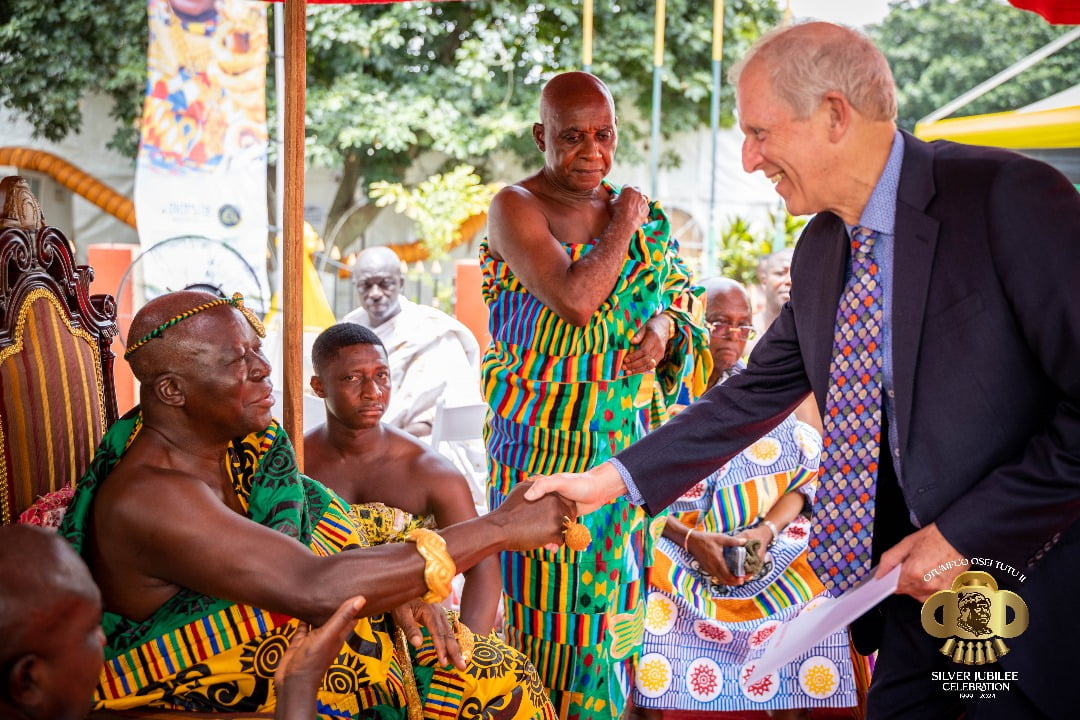
The items include a 300-year-old original Mponponso sword by which every Asantehene swore the oath of office and used by the paramount chiefs of Asante to swear their oath of allegiance before the Asantehene and a seat owned by Asantehene Kofi Karikari, the tenth King of the Asante Kingdom.
They also include one gold peace pipe, a gold knife, three cast gold soul-washers’ badges, seven sections of sheet-gold ornament, one silver straining spoon, one pair of silver anklets and one section of sheet-gold ornament.
Agreement
The British and the V&A Museums are loaning the 15 and 17 treasures respectively on an initial three-year agreement. This is renewable for another three years.
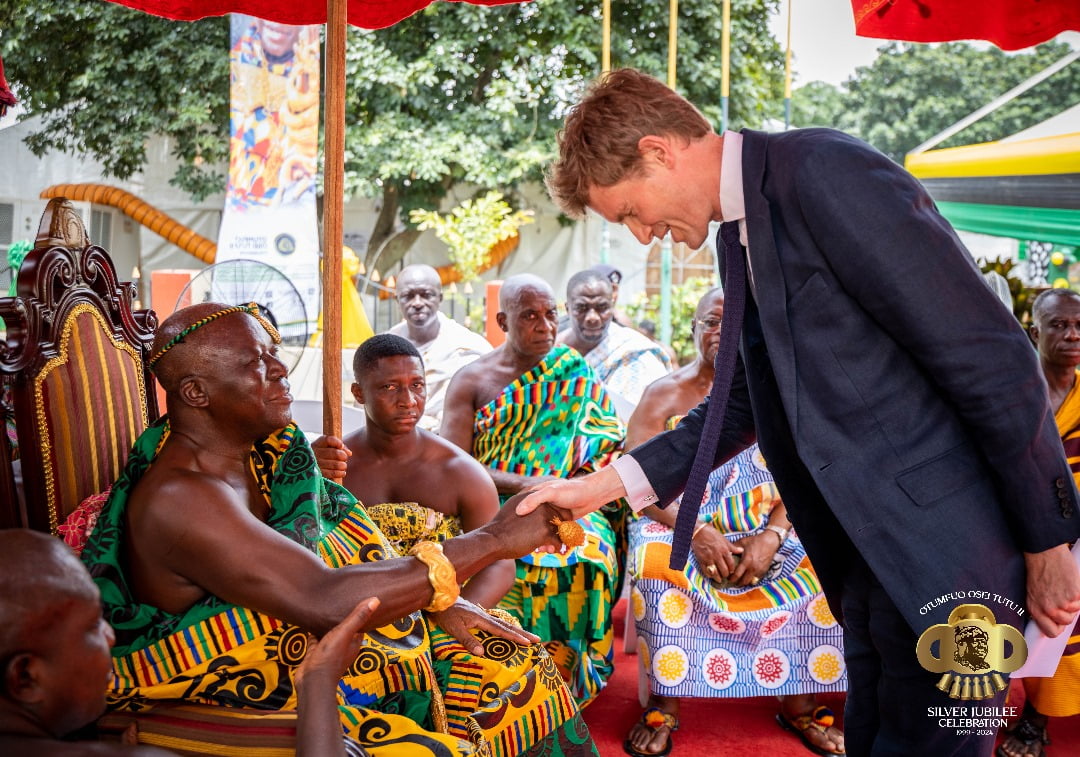
The British Museum Act 1963 prohibits their museums from removing an artefact from its collections unless it is a duplicate, damaged or unfit.
Meanwhile, the ones from the Fowler Museum- seven pieces- are home on a permanent basis.
Book Launch
The occasion was used to launch two books: “History of Manhyia Museum” by Ivor Agyeman-Duah and “Images of Ghana Museums” by Malcolm McLeod.




